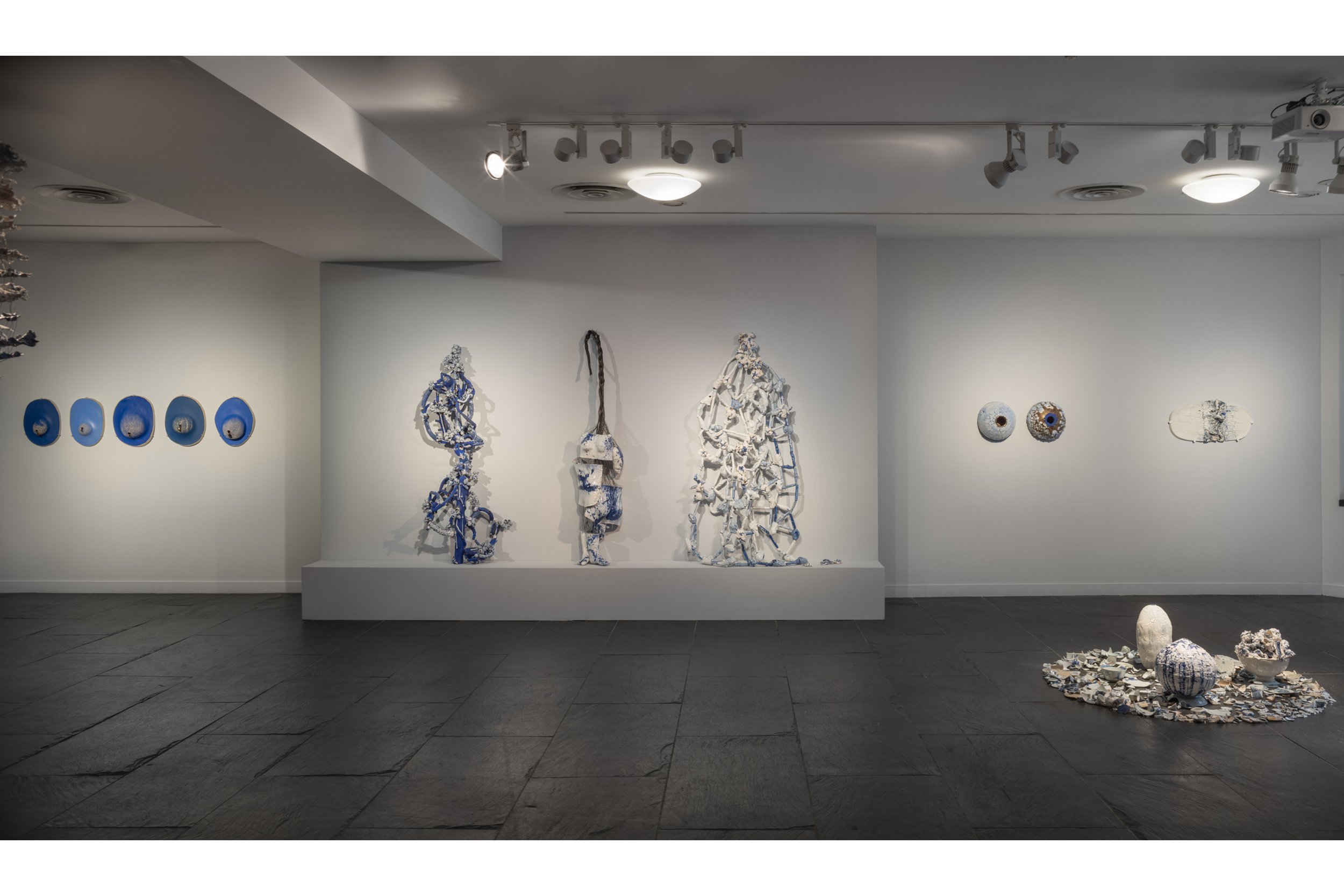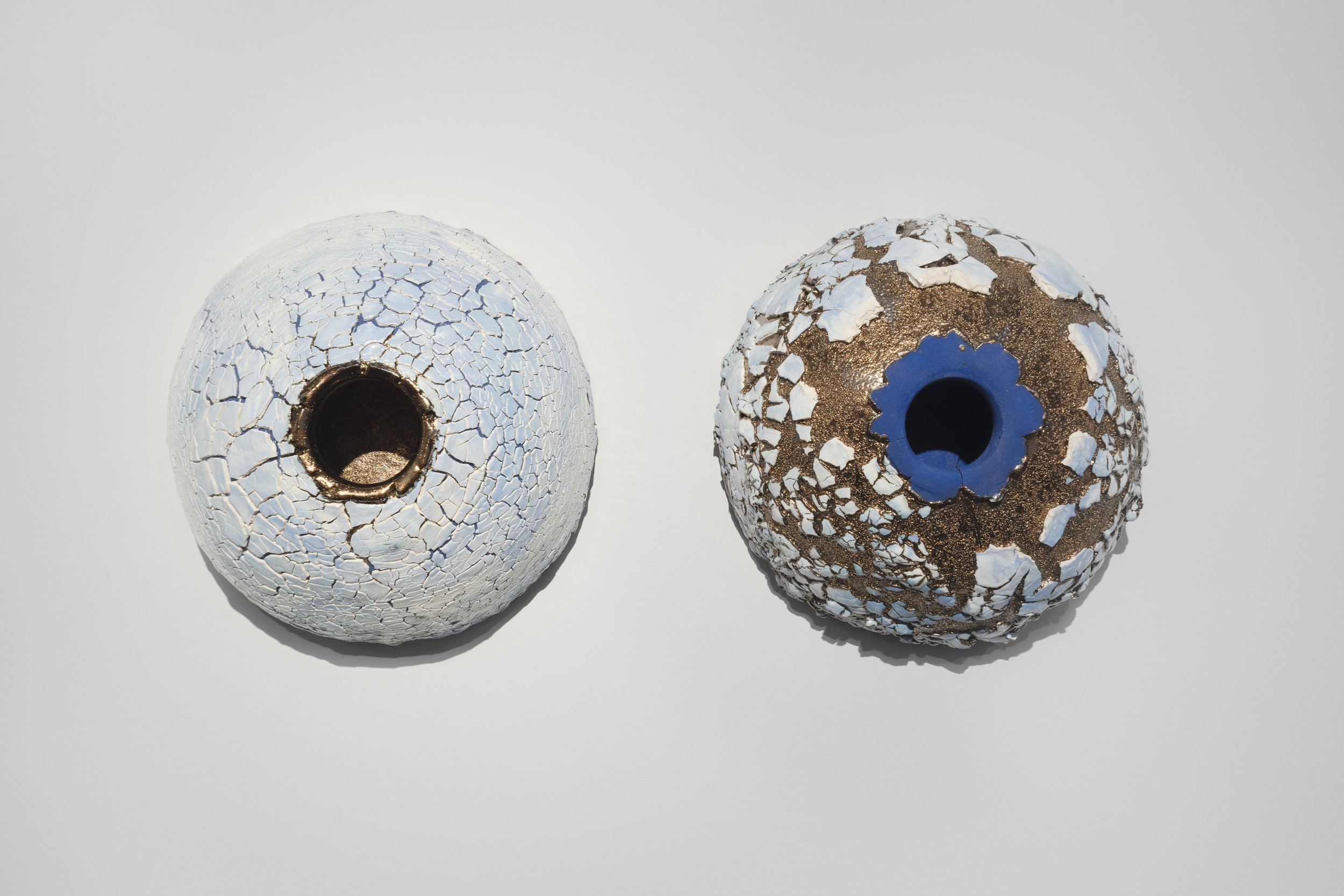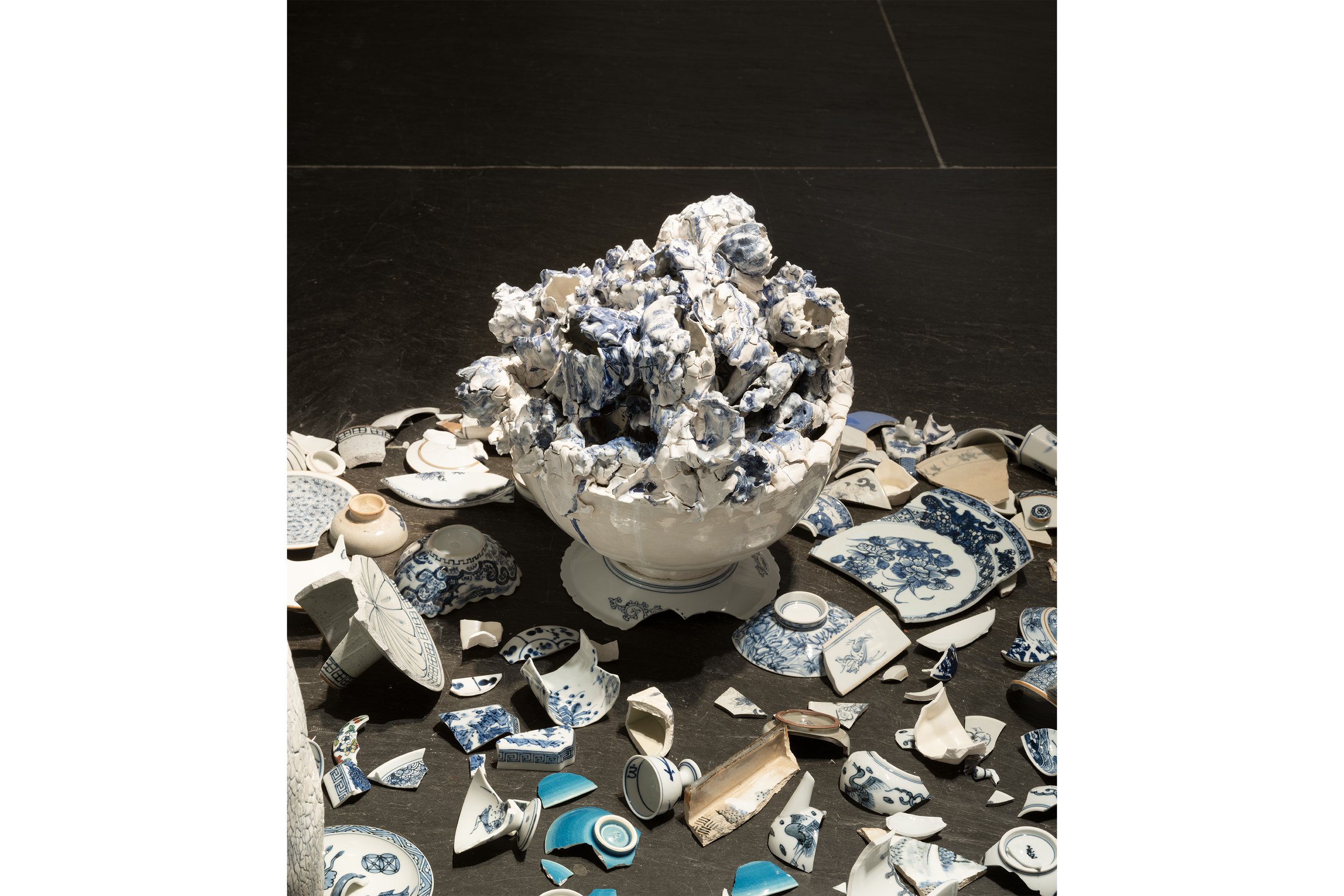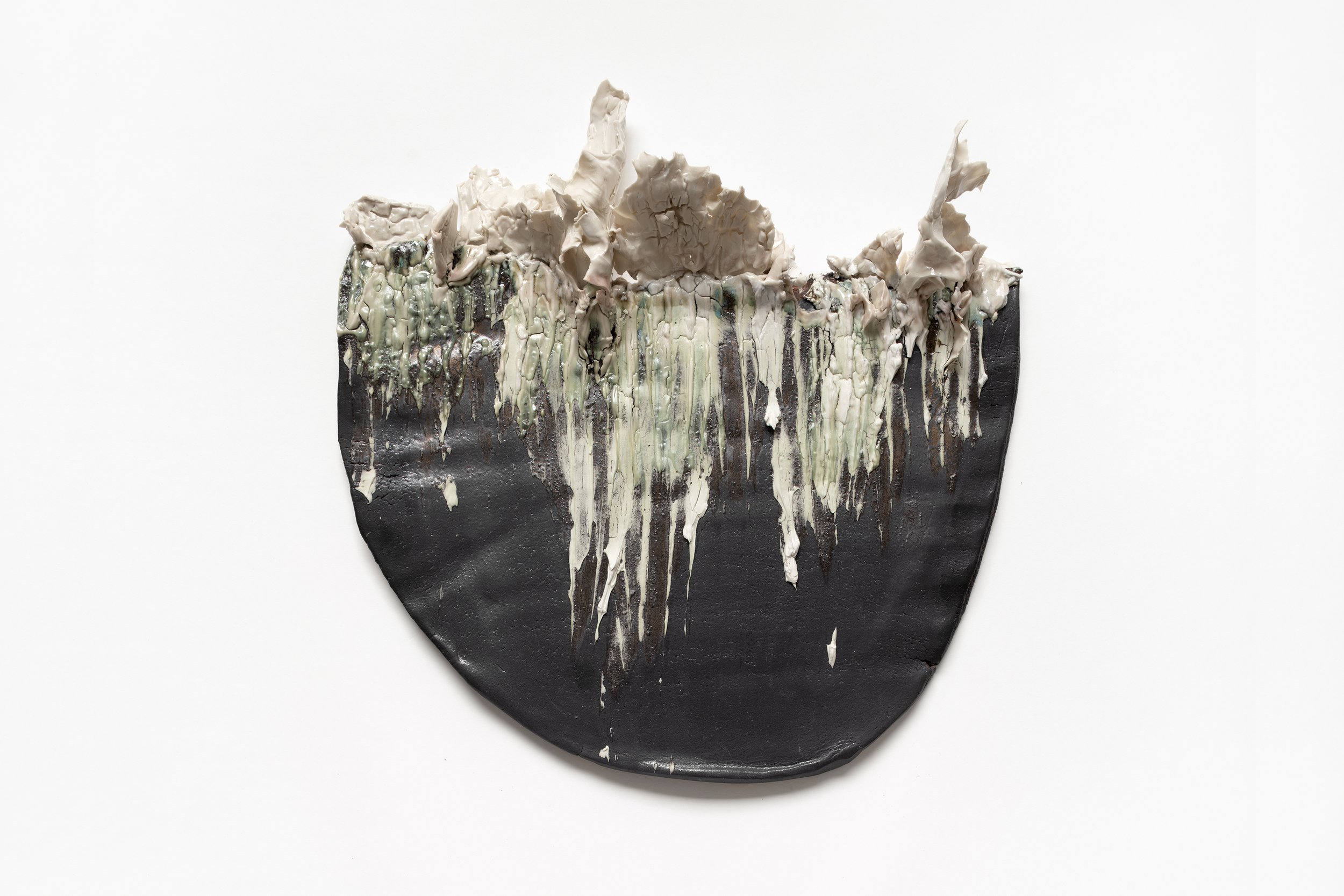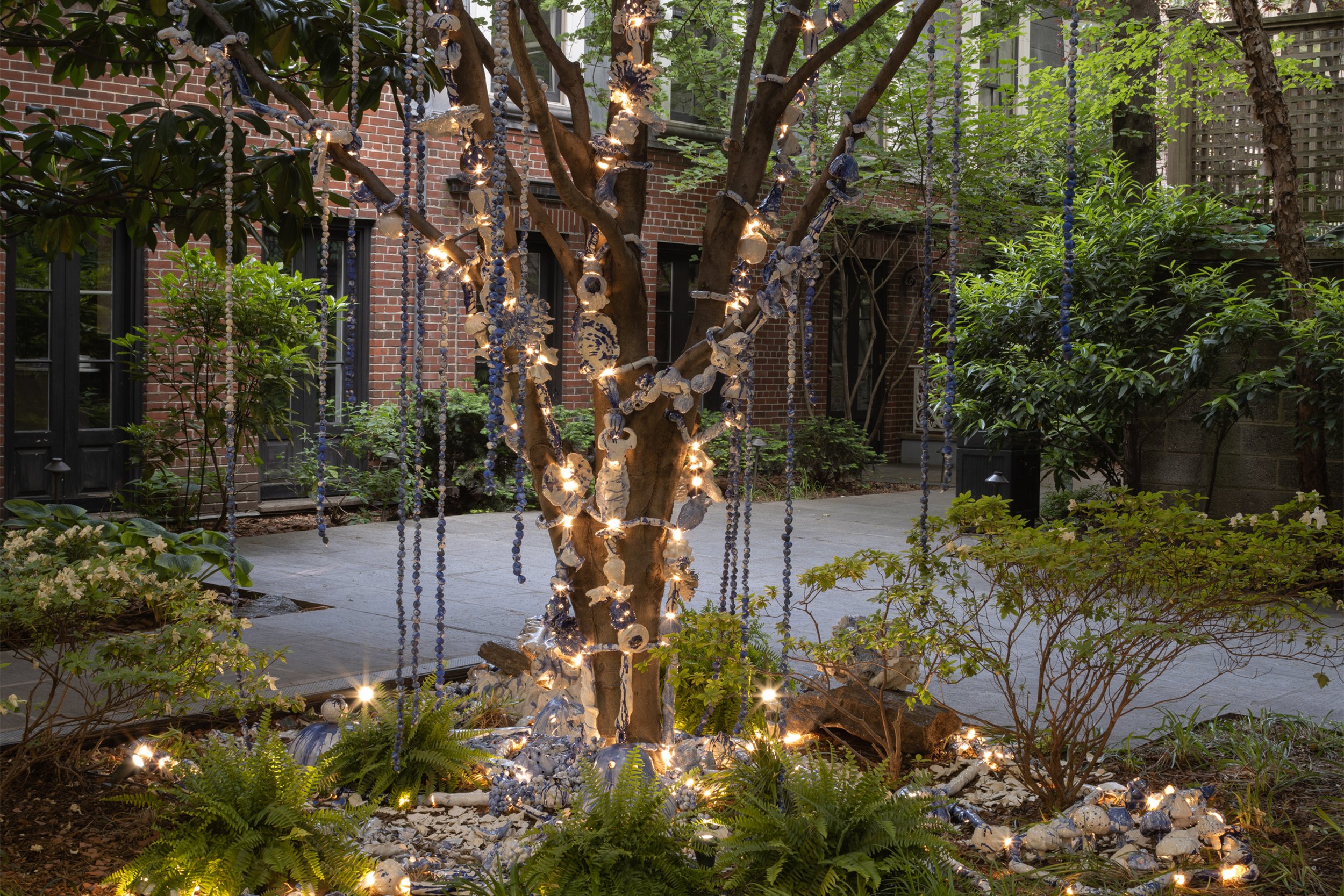TERRUÑOS
an incantation to the earth
curated by Dr. Barbara Stehle
at the Instituto Cervantes New York, USA
May 17 – September 30, 2023
LECTURE
“Rompiendo La Cerámica”
September 14, 2023
Instituto Cervantes, New York USA
A panel discussion with Inma Barrero, Brett Littman from the Isamu Noguchi Foundation and Garden Museum Director, Carleigh Queenth, Head of Ceramics at Christie’s Auction House, Margaret Connors McQuade, former director of The Hispanic Society Library & Museum, and Barbara Stehle, curator and professor.
Over the past few years, Inma Barrero left her New York City home and studio to live in Kyoto, Japan and to go back to her native Spain. These years were filled with reflection and change, and laid fertile ground for the artist. The new body of work showcased at the Instituto Cervantes is a result of Barrero’s alchemical experimentations and profound introspections during a transformative period.
Terruños evokes the artist’s personal geography, the many places she lived in and journeyed through. The palette and matter call on the artist’s heritage: the Azulejos and architecture of southern Spain, but also the Japanese techniques and the many soils she so loves and respects. Terruños is a testament to fragility and resilience, colored by the red of blood and the dark of the earth, the blue and white of water, and the green of plants.
Collectively, Terruños conveys a sense of our origins and our relationship to Mother Earth. Terruños is a sacred place where spirituality is to be found in our connection with nature and the earth. The pieces Barrero created for Terruños are objects made to invoke the spirits and request favors from the gods. Some titles speak for themselves: Tree of Life, Rosario, Pachamama… These are votive sculptures, akin to those found in ancient civilizations. These works serve as embodiments of ancestral archetypes, magical objects for invocations.
The divine mother is the central figure of Terruños. Her shapes and essence are recognizable: breasts, body parts, fruits and fertility symbols. The feminine transforms and manifests itself in the movements of dance, the iconography of sculptures and installations. Barrero’s own self is exposed in its fierce vulnerability. The artist persistently focuses on flaws, cracks and broken parts. The works defy canons and ideals.
Barrero insists that beauty is to be found in imperfection and that true strength lies in mending, in sewing back together. Her work affirms that there is courage and grace in repairing rather than discarding what is broken.
Dr. Barbara Stehle
Curator
Terruños, creative process
“Perfection does not interest me. What I am looking for is expression.”
Inma Barrero, Spring 2023
The artist speaks of her work process and philosophical approach
Accidents - I like to push my materials to the limit and provoke accidents. I know I can use accidents to create something unique and expressive. Accidents alter life in their unique way and it is true for ceramics also. I'm drawn to fragility and imperfections, and I find beauty in them. Most people see fragility as a weakness, but I see it as a strength. Accidents define our identity and cannot be repeated exactly the same way.”
Found objects - Like the artists of Arte Povera I am interested in found objects. All my life, I have collected broken ceramics. In Spain where I am from, when you go on a walk you find abundant broken ceramics. Some will date back to the Neolithic, and others from Roman times, and others are recent. You find in nature traces of near and far domesticity.
Most traditional houses in the South of Spain have azulejos, outdoors and indoors. It is part of our culture, our daily life. In Castilla, they make the “Ceramica de Talavera”, their white and cobalt blue remain present in my work. Spaniards imported these to Mexico and they arrived mostly broken, so production started in Puebla Mexico, and I found these again when I moved to Mexico City.
Years later I moved to Kyoto and looked for broken ceramics on the studio street where I had my workshop. You could find so many broken ceramics. People usually want things that did not make it to perfection to disappear. They wish to forget mistakes, but to me, it is fascinating. I am more interested in the process and the setbacks. I find humanity in it.
Breaking ceramics and the rules - In ceramics they are so many rules, you cannot do this, you cannot do that. I intuitively gravitate toward questioning traditional processes. I am curious and love exploring. What would happen if I reversed the process? What if I did glazing in the wrong order. I had to learn all the rules before I could break them in a constructive way. It has been a learning curve, and now I have the courage to push. I am free in breaking ceramics and putting them back together.
My work is sculpture, so breaking the rules has different consequences than if you are creating something utilitarian. Functionality is not an issue. To the contrary, I am interested in exploring the potential of the breaks. When I was in San Francisco I made very thin and flat pieces, if they broke, I could not discard them, I wanted to know what I could create with them. I thought of ways to integrate them in new works.
Repairing and sewing - In Spain, if a ceramic broke, it was usually repaired. Every city had street repair craftsmen who worked out of their cart. Whoever needed their services would bring down their ceramics to the street. These craftsmen would pierce the object to repair with tiny holes, they then used staples to tie them back together. We called the technique “Lañas”. I saw it again and again growing up.
It is a beautiful thing to stitch the pieces back together. To me, this fixing of the ceramic is associated with another memory: all the women in my family were sewing, they all were doing something with a needle. That act of sewing things together for me is home. I realize that what I do has a lot to do with these experiences. My sculptures are about weaving, I sew them together with a metal line. I stitch them together.
Kyoto - I spent 2019 in Kyoto. I was always interested in the arts of Japan and especially ceramic making. There is a great tradition and expertise in ceramics, and in Kyoto some of the workshops I visited have been in activity for generations. This is something that is disappearing in Europe.
In Kyoto, I had a profound experience witnessing the living crafts. I could watch other people working. It was inspiring. I worked a lot and gained new knowledge. One technique I learned is the traditional way to repair ceramics. It is called « Kintsugi ». Gold, silver or other metals are used to seal broken pieces together. Kintsugi leaves a beautiful scar, making the pieces even more beautiful than before.
EXHIBITED WORKS
About Inma Barrero
Inma Barrero is an artist with an object and installation-based practice. Barrero’s iconography and experimental research with ceramic is influenced by her Spanish upbringing, the Latin American continent and her experience living in Japan. Her latest body of work reflects her preoccupation with the fragility of life and spiritual approach to body and mind.
About Instituto Cervantes New York
Instituto Cervantes is an institution founded by the Spanish government in 1991 with the aim to spread Spanish and Hispanic-American culture. More information ny.cervantes.es
About Dr. Barbara Stehle
After earning her PhD in Contemporary Art History from the Sorbonne, Barbara Stehle worked for the Centre Georges Pompidou in Paris. Now based in New York City, Stehle curates, writes and lectures on the arts and architectural field. She teaches at the Rhode Island School of Design and is the founder of Art Intelligentsia.
